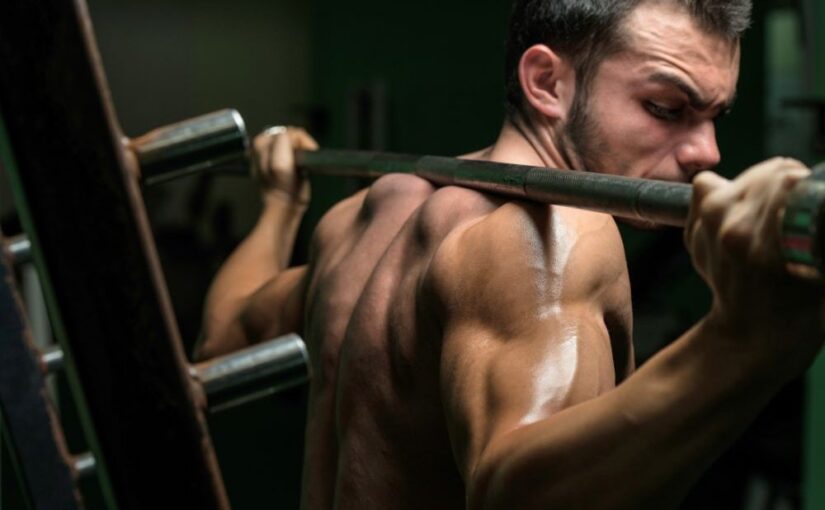When it comes to strength training, having the right equipment can make a significant difference in your workouts. Two of the most popular pieces of equipment for squats and other exercises are the squat rack and the power cage. Both have their advantages, but choosing between them can be challenging. In this article, ‘Squat Rack vs. Power Cage: Which One Is Right for You?’ we’ll explore the key differences, benefits, and considerations for each to help you decide which is best for your fitness goals.
Understanding the Basics
Squat Rack
A squat rack, also known as a squat stand, is a simpler piece of equipment designed primarily for performing squats. It typically consists of two vertical posts and adjustable safety bars. Squat racks are often more compact and can fit into smaller spaces.
Key Features:
- Adjustable Height: Allows users to set the bar at different heights for various exercises.
- Versatile: Suitable for squats, bench presses, and other lifts.
- Compact Design: Generally takes up less space than a power cage.
Power Cage
A power cage, or power rack, is a more robust and enclosed piece of equipment. It features four vertical posts, adjustable safety bars, and usually includes pull-up bars and additional attachment points for accessories.
Key Features:
- Enclosed Design: Provides a safer environment for heavy lifting.
- Multiple Functions: Supports a wide range of exercises, including squats, bench presses, overhead presses, and more.
- Additional Features: Many power cages come with attachments for dips, pull-ups, and other exercises.
Benefits of Each
Benefits of Squat Racks
- Space Efficiency: Squat racks typically require less floor space, making them ideal for home gyms with limited room.
- Cost-Effective: Generally more affordable than power cages, making them a good option for beginners or those on a budget.
- Simplicity: Easier to set up and use, especially for those new to weightlifting.
Benefits of Power Cages
- Safety Features: The enclosed design and adjustable safety bars provide added security, especially when lifting heavy weights alone.
- Versatility: Can be used for a broader range of exercises, making it a more comprehensive piece of equipment for strength training.
- Stability: Power cages often feel more stable during heavy lifts due to their robust construction.
Considerations for Choosing
Training Goals
When deciding between a squat rack vs. power cage, think about your specific training goals:
- If your primary focus is squats and basic lifts, a squat rack might be sufficient. It offers the essential features needed for those exercises.
- If you plan to perform a wider variety of lifts or lift heavy weights, a power cage is likely the better choice. It provides additional safety and versatility.
Space and Budget
- Space: Measure your available space before making a decision. A squat rack requires less floor space, while a power cage needs more room.
- Budget: Consider your budget. Squat racks are usually less expensive, making them a practical choice if you’re just starting out or have limited funds.
Experience Level
- Beginners: A squat rack can be a good starting point for new lifters. It’s simpler and easier to navigate.
- Advanced Lifters: More experienced lifters may prefer a power cage for its safety features and versatility, especially when lifting heavy weights.
Conclusion
In the squat rack vs. power cage debate, both pieces of equipment have their unique advantages and are valuable additions to any home gym. Your choice ultimately depends on your training goals, available space, and budget. If you’re primarily focused on squats and need something space-efficient and cost-effective, a squat rack may be the way to go. However, if you want a versatile piece of equipment that offers more safety for heavy lifting, a power cage is likely the better option.
Whichever you choose, both options will help you achieve your strength training goals and enhance your workout routine!
Frequently Asked Questions (FAQ)
For beginners, a squat rack is often a better choice because it’s simpler to use and takes up less space. It’s great for those who are primarily focused on squats and basic lifts.
A squat rack can be safe if used with proper form, but it doesn’t provide the same level of safety as a power cage. The enclosed design of a power cage offers added security, especially when lifting heavy weights alone.
Yes! Power cages offer versatility by supporting a variety of exercises such as bench presses, overhead presses, pull-ups, dips, and more, making them a great option for comprehensive strength training.
Squat racks are more compact than power cages, making them an excellent choice for home gyms with limited space. Their compact design makes them easy to store and set up in smaller spaces.
Power cages tend to be more expensive than squat racks because of their larger size and extra features, such as additional attachments and safety bars. If you’re on a budget, a squat rack is usually a more budget-friendly choice.
Recommended Home Gym Equipment
To enhance your strength training routine, consider investing in some of the equipment below for your home gym:
Squat Racks
A squat rack is an essential piece of equipment for any lifter. It allows you to safely perform squats and other exercises with the flexibility to adjust the bar height. Whether you’re a beginner or an advanced lifter, a squat rack will help take your workouts to the next level.
Power Cages
Power cages (or power racks) are a robust, enclosed piece of equipment that provides safety and stability for heavy lifts. They support a wide range of exercises like squats, bench presses, pull-ups, dips, and more.
Barbell Sets
A complete barbell set is perfect for various exercises, including squats, deadlifts, and bench presses. It provides all the weight plates you need for progressive strength training and growth.
Leg Press Machines
For those who want to target the legs in isolation, leg press machines are a fantastic choice. They focus on your quads, hamstrings, and glutes, helping you build leg strength safely and effectively.
Leg Extension and Curl Machines
To more precisely target your quadriceps and hamstrings, consider incorporating leg extension and curl machines into your home gym. These machines are ideal for isolating and building muscle in these areas.
Affiliate Disclaimer: The above links are affiliate links, which means we may earn a small commission if you make a purchase through these links.

